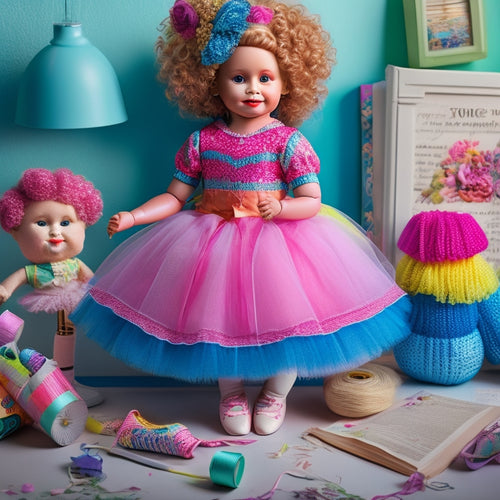
Dance Education Research Initiative Sparks Innovations
Share
The Dance Education Research Initiative is a catalyst for innovative approaches to dance education, driving advancement in the field through rigorous research, strategic partnerships, and a commitment to cultural inclusivity and evidence-based practices. This multifaceted initiative incorporates quantitative and qualitative research designs to illuminate complex interplay between dance pedagogy, student learning outcomes, and community engagement. By identifying key research priorities, trends, and impact of dance education, the initiative sparks innovations that strengthen programs and address funding policies. As the landscape of dance education research continues to evolve, further exploration of these advancements holds the promise of transformative insights.
Key Takeaways
• A multifaceted approach to dance education research is necessary, incorporating both quantitative and qualitative methods for comprehensive findings.
• Strategic partnerships and collaborations are essential for leveraging diverse perspectives and expertise to address complex research questions.
• Identifying key research priorities in dance education helps illuminate the complex interplay between pedagogy, student learning outcomes, and community engagement.
• Innovative research designs and methods are necessary to investigate the impact of dance education on student learning outcomes and community engagement.
• Community partnerships and engagement are crucial for tapping into local knowledge and experiences, enriching studies, and addressing funding policies for necessary research support.
Advancing Dance Education Research
As the dance education research landscape continues to evolve, a multifaceted approach is necessary to advance the field, incorporating a range of research designs that support both quantitative and qualitative methods.
A thorough understanding of research impact is essential in informing evidence-based practices that enhance teaching and learning. Moreover, exploring diverse learning preferences is fundamental in catering to the needs of students from diverse cultural backgrounds.
Collaborations and Partnerships
Through strategic collaborations and partnerships, dance education researchers can leverage diverse perspectives, expertise, and resources to address complex research questions and inform evidence-based practices.
By fostering community partnerships, researchers can tap into the wealth of knowledge and experiences within local communities, enriching their studies and promoting more inclusive and culturally responsive research.
Additionally, addressing funding policies can guarantee that dance education research receives the necessary support to thrive.
Research Priorities in Dance
In identifying key research priorities in dance education, scholars can illuminate the complex interplay between dance pedagogy, student learning outcomes, and community engagement. By doing so, researchers can identify trends and strengthen programs that foster a deeper understanding of dance education.
This involves:
- Investigating the impact of dance education on student learning outcomes and community engagement
- Developing and implementing diverse research designs to support quantitative and qualitative methods
- Examining the intrinsic and instrumental values of dance education to inform policy and practice
Frequently Asked Questions
How Does Dance Education Impact Students' Social and Emotional Development?
Dance education profoundly influences students' social and emotional development by fostering empathy building through shared movement experiences and confidence boosting through mastery of techniques, ultimately cultivating well-rounded individuals with enhanced emotional intelligence.
What Role Does Dance Education Play in Fostering Creativity and Innovation?
'Explore beyond the conventional boundaries' to reveal the full potential of dance education, where cross-disciplinary approaches and artistic freedom converge, fostering creativity and innovation in students, as they embody self-expression and bring novel ideas to life.
Can Dance Education Help Address Learning Disabilities and Adhd?
"Dance education can positively impact individuals with learning disabilities and ADHD by improving motor control through repetitive movement patterns, stimulating neuroplasticity, and enhancing cognitive function, ultimately fostering a more inclusive and supportive learning environment."
How Does Dance Education Intersect With Other Arts Disciplines?
Dance education intersects with other arts disciplines through interdisciplinary collaborations, fostering artistic fusion and facilitating holistic learning experiences that transcend traditional boundaries, sparking innovative expressions and enriching the artistic landscape.
What Are the Long-Term Benefits of Dance Education on Career Choices?
"Absence of evidence does not constitute evidence of absence," and indeed, the long-term benefits of dance education on career choices are profound, fostering career advancement through versatile skill sets and professional networking opportunities that transcend traditional boundaries.
Related Posts
-

Get Certified in Dance Makeup With Online Courses
You can gain a recognized certification in dance makeup through online courses, which demonstrate your expertise and ...
-

Top New Balance Dance Shoes for Comfort and Performance
If you're on the hunt for top New Balance dance shoes that maximize comfort and performance, consider models like the...
-

Exciting 'Dancer Doll' Sewing Pattern Released
The Dancer Doll sewing pattern is now available, offering a detailed guide to crafting a beautifully detailed doll. T...


